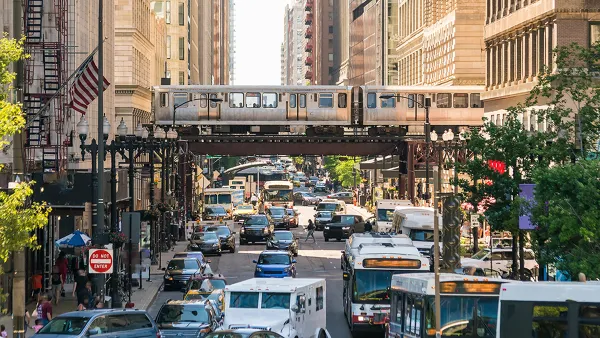And why it is wrong.

Recently, the federal government approved an environmental assessment for Manhattan’s congestion pricing program, allowing the program to go forward. By making driving more expensive, the program is likely to reduce pollution, injuries from traffic crashes, noise and automobile-related congestion in Manhattan, and will provide tax revenue for New York City’s public transit program.
Nevertheless, this program is quite controversial. One of the most interesting arguments against the program is that it is actually bad for Manhattan. For example, polymath and economist Tyler Cowen argues that to the extent congestion pricing succeeds in reducing congestion, it will reduce the flow of humans going into Manhattan, thus reducing revenue for Manhattan’s businesses, cultural attractions etc. This argument has some factual basis: even if most would-be drivers will be lured onto mass transit by congestion pricing, some number exceeding zero will avoid the city instead.
The argument rests on an assumption that a city is most appealing when automobile commuting is easy. But this assumption seems inconsistent with historical reality. This is the assumption that justified the “urban renewal” policies of the mid-20th century: city leaders used eminent domain to physically destroy city neighborhoods in order to build highways (and widen surface streets) leading to suburbia, so that suburbanites could drive to the city more easily. In addition, the same city leaders instituted minimum parking requirements so that suburbanites could park in the city more easily, thus turning downtowns into a wilderness of parking lots. If Cowen’s assumption had been correct, mid-century Americans would have flocked to renew old urban neighborhoods, since the cities were so easy to enter and exit. Instead, the highways and parking made it easier to commute from city to suburb, and thus encouraged commuters to move to suburbs. And after the commuters moved, jobs and businesses moved with them, and central cities declined. *
The least drivable and most congested cities, such as New York City, survived urban renewal with most of their population intact: New York lost only 11 percent of its population between 1950 and 1980, and its current population now exceeds its 1950 population. By contrast, low-congestion cities (other than those that annexed huge chunks of suburbia) suffered horribly: for example, St. Louis has lost over a third of its 1950 population.**In those cities, urban renewal was very, very successful at facilitating automobile commuting—as a result, it was very, very unsuccessful in renewing the city.
In sum, a “drivable” city is not necessarily a prosperous one. So if making cities like Manhattan easier to drive through doesn’t make them more appealing, it logically follows that making them harder to drive through won’t make them less appealing.
*Admittedly, highways were not the only cause of suburbanization. However, there is certainly some scholarly evidence of a causal relationship. Moreover, most other possible causes of suburbanization (rising crime, corruption, failed school integration, etc) existed in New York just as they existed in St. Louis or other declining cities.
**Can I prove that there is a causal relationship here? Because we don't know which cities were most congested in 1950 or 1970, it is hard to be sure. One might argue that New York is more congested only because it has not lost population. On the other hand, it seems to me as a matter of common sense that if it is easy for workers to live in the suburbs and drive downtown, they are more likely to live in the suburbs than if such commuting was more difficult.

Planetizen Federal Action Tracker
A weekly monitor of how Trump’s orders and actions are impacting planners and planning in America.

Chicago’s Ghost Rails
Just beneath the surface of the modern city lie the remnants of its expansive early 20th-century streetcar system.

Amtrak Cutting Jobs, Funding to High-Speed Rail
The agency plans to cut 10 percent of its workforce and has confirmed it will not fund new high-speed rail projects.

Silicon Valley ‘Bike Superhighway’ Awarded $14M State Grant
A Caltrans grant brings the 10-mile Central Bikeway project connecting Santa Clara and East San Jose closer to fruition.

Mexico City Anti-Gentrification Plan Aims to Half Housing Deficit
The plan comes in response to protests that targeted ‘digital nomads’ who locals blame for driving up housing costs.

Chicago Has Quietly Built Hundreds of Neighborhood Traffic Circles
Thanks largely to one alderperson’s efforts, the city has made mini-roundabouts a key piece of its road safety strategy.
Urban Design for Planners 1: Software Tools
This six-course series explores essential urban design concepts using open source software and equips planners with the tools they need to participate fully in the urban design process.
Planning for Universal Design
Learn the tools for implementing Universal Design in planning regulations.
City of Fort Worth
planning NEXT
Mpact (founded as Rail~Volution)
City of Camden Redevelopment Agency
City of Astoria
City of Portland
City of Laramie






























